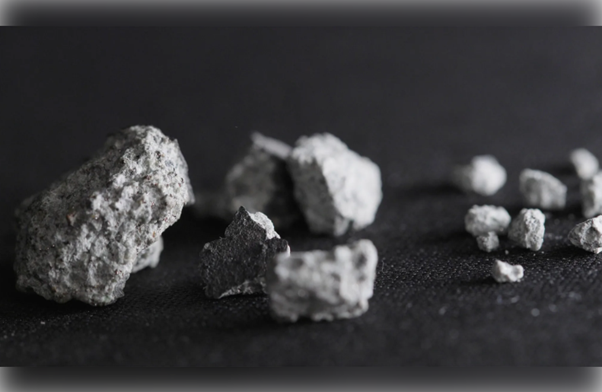Several meteorites collected from Henry County, Georgia, have been tentatively identified as being from a major asteroid belt collision. If correct, this would make them among the oldest Solar System fragments, quite likely dating from before the Earth formed.
On June 26, a fireball was spotted over Atlanta, Georgia, despite competing with the light of the Sun in the daytime sky. The incoming object fragmented in the atmosphere with several components large enough to make it to ground without burning up.
Based on the composition of the pieces and what is known about the trajectory of the object, scientists have identified its suspected origins, although this has yet to be published for peer review.
“This particular meteor that entered the atmosphere has a long history before it made it to the ground of McDonough, and in order to totally understand that, we actually have to examine what the rock is and determine what group of asteroids it belongs to,” said Scott Harris of the University of Georgia (UGA) in a statement.

The assembled fragments of the McDonough Meteorite.
Image Credit: Cade Massey
Combined pieces add up to around 50 grams (1.8 ounces). Almost half of these were taken to UGA for analysis, where Harris concluded it is a low metal chondrite.
“It belongs to a group of asteroids in the main asteroid belt between Mars and Jupiter that we now think we can tie to a breakup of a much larger asteroid about 470 million years ago,” Harris said. “But in that breakup, some pieces get into Earth-crossing orbits, and if given long enough, their orbit around the Sun and Earth’s orbit around the Sun end up being at the same place, at the same moment in time.”
Other fragments will be displayed at the Tellus Science Museum in Cartersville, avoiding the controversy associated with the recent sale of Mars meteorite NWA 16788 for $4.3 million without the permission of the government of Niger, where it fell.
The break-up occurred almost 90 percent of the way through the life of an object thought to have formed 4.56 billion years ago, in the earliest days of the Solar System and 20 million years before the Earth formed.
“When [space rocks] encounter Earth, our atmosphere is very good at slowing them down,” Harris said. “But you’re talking about something that is double the size of a 50-caliber shell, going at least 1 kilometer [0.6 miles] per second. That’s like running 10 football fields in one second.”
The consequence was that the largest fragment pierced the roof of a McDonough house, as well as the HVAC duct and ceiling, with enough momentum left to make a dint in the floor.
Although not as alarming as the space rock that landed on a Canadian woman’s pillow next to where she had been sleeping, the house owner described the sound as similar to a gunshot at close range, and felt the vibrations of the impact. Pieces are thought to have missed the resident by 4.2 meters (14 feet).
“I suspect that he heard three simultaneous things. One was the collision with his roof, one was a tiny cone of a sonic boom and a third was it impacting the floor all in the same moment,” Harris said. “There was enough energy when it hit the floor that it pulverized part of the material down to literal dust fragments.”
Although the largest piece has been taken UGA, the living room received a generous share of space dust, potentially including some falling from the ceiling.
An assessment by Harris and colleagues will be submitted to the Nomenclature Committee of the Meteoritical Society, which will lead to the object being formally designated as the McDonough Meteorite. Although the 27th meteorite recovered in the state, it is only the sixth where the fall was witnessed, allowing planetary scientists to retrace its path.
Analysis of meteorites improves our understanding of the processes by which the Solar System formed, but Harris also expressed the hope it could help us prepare for the arrival of one large enough to be dangerous.
As for the householder, besides having a story to tell, let’s hope his insurance covers acts of God.
Source Link: Meteorite That Punctured Georgia House May Be 20 Million Years Older Than Earth